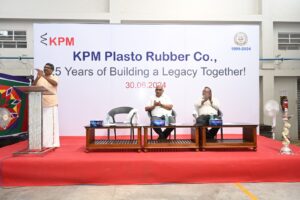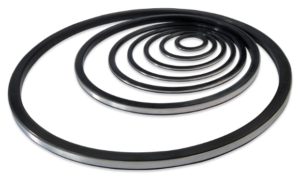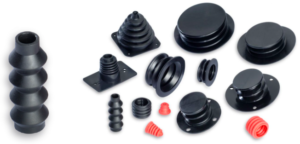We proudly celebrated a significant milestone in KPM Plasto Rubber Co.’s journey with the grand celebration of its 25th Silver Jubilee. The event reflected the success, growth, and passion of everyone involved in making KPM Plasto Rubber Co., what it is today. The celebration was graced by our esteemed Chief Guest and filled with memorable activities that highlighted our journey and achievements over the years.
A Tribute to 25 Years of Success
The jubilee celebration was more than just a commemoration; it was a reflection of KPM Plasto Rubber Co.’s journey that began with a vision to innovate and excel in the rubber industry. Established in 1999, the company has consistently set benchmarks in quality and innovation, earning the trust of customers and partners alike.
This milestone is a tribute to the dedication and hard work of our entire team. We take pride in reflecting on our journey and eagerly anticipate the future opportunities that await us.

Honored Guests and Inspiring Speeches
The highlight of the celebration was the presence of esteemed guests Mr. Kovai Dhanapal and Mr. Mohamed Ariffuddeen. Their presence added a special significance to the event, honoring their longstanding support and contribution to the company’s success. Both guests delivered heartfelt speeches that resonated with everyone present, sharing wisdom and encouragement for the future.
 Recognizing Excellence and Long-term Commitment
Recognizing Excellence and Long-term Commitment
As part of the jubilee celebrations, outstanding employees were recognized for their dedication and contributions to the company’s growth. Their achievements were acknowledged as integral to KPM Plasto Rubber Co.’s success story, underscoring the importance of a motivated and skilled workforce in achieving organizational milestones.
A Day Filled with Fun and Sports
Beyond the formalities, the jubilee was also a day filled with joy and camaraderie. Sports events were organized for both children and employees, fostering a spirit of teamwork and healthy competition. From sack races to tug-of-war, everyone participated enthusiastically, strengthening bonds within the KPM Plasto Rubber Co. family.

A Heartfelt Thank You
The event concluded with a heartfelt thank you to everyone who has been a part of KPM Plasto Rubber Co.’s journey. From suppliers to clients, employees to families, each individual has played a crucial role in shaping the company’s success story.
We extend our gratitude to Mr. Kovai Dhanapal and Mr. Mohamed Ariffuddeen. for gracing the occasion and sharing their valuable insights. Their presence made the event even more special and memorable.
This celebration was more than an event; it was a reaffirmation of KPM Plasto Rubber Co.’s values and vision for the future—a future filled with promise and endless possibilities.
To learn more about KPM Plasto Rubber Co., and its journey, visit our website at www.kpmrubber.com


